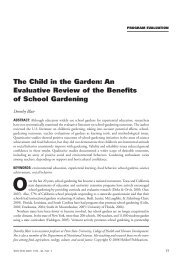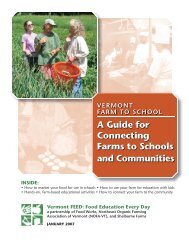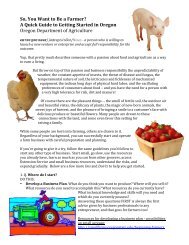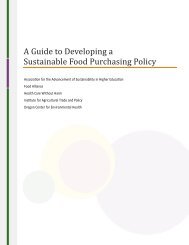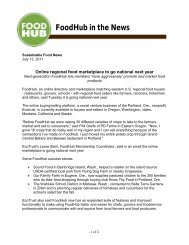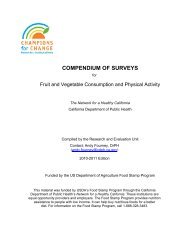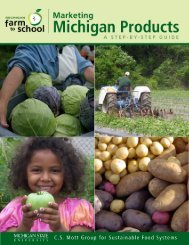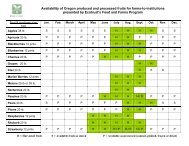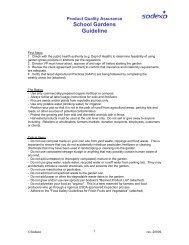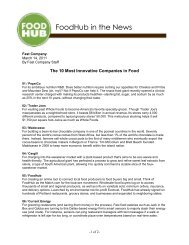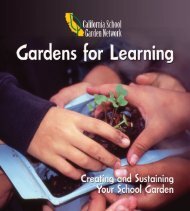eval report cover.indd - New Jersey Farm to School Network Wiki
eval report cover.indd - New Jersey Farm to School Network Wiki
eval report cover.indd - New Jersey Farm to School Network Wiki
Create successful ePaper yourself
Turn your PDF publications into a flip-book with our unique Google optimized e-Paper software.
Resources and Tools for Measuring <strong>Farm</strong> <strong>to</strong> <strong>School</strong> Impactcally tailored <strong>to</strong> outcomes of interest. None of the programs studied for this <strong>report</strong> haveused surveys <strong>to</strong> assess this indica<strong>to</strong>r; though some have used informal discussions andinterviews with the teachers and school administration. For example, the Burling<strong>to</strong>n<strong>Farm</strong> <strong>to</strong> <strong>School</strong> project has conducted focus group discussions with teachers participatingin the farm <strong>to</strong> school program.Policy ImpactsImpacts on policies are important measures of whether a farm <strong>to</strong> school program hasfacilitated systemic changes in the school food environment and school food policies.a) <strong>School</strong> food policiesMoni<strong>to</strong>ring of school food policies at thedistrict level doesn’t necessarily requirespecific survey <strong>to</strong>ols. A copy of the food/wellness policy is usually posted on thedistrict’s website and may also be availablethrough the district office.b) City, county, state and federal level policiesPublic policies that are supportive of farm <strong>to</strong> school and other community-based foodsystems work.Food Service Impacts<strong>School</strong> food service plays a crucial role in implementing change at the cafeteria levelin most farm <strong>to</strong> school programs. Th e program has more chances of being sustainedwithout external support if it has successfully impacted food service operations, working<strong>to</strong>wards making the farm <strong>to</strong> school purchasing approach fi n ancially viable for thedistrict. An assessment of the processes and fac<strong>to</strong>rs influencing changes <strong>to</strong> food servicepractices is a significant gap in farm <strong>to</strong> school literature.a) Financial viability of food service programs►►Examples of <strong>to</strong>ols used inassessing policy impacts (seeappendices p 166-172):Cost per farm <strong>to</strong> school meal: To calculate the real cost of serving a farm <strong>to</strong>school meal, data on cost of food, labor, equipment, and other costs from theschool food service will be needed. Often, this data is presented in comparisonwith cost per non-farm <strong>to</strong> school meal option.An in-depth analysis of income generation and expenditures for the farm <strong>to</strong>school portion of food service or nutrition education programs can be carriedout. Financial data may not be readily available with the school district in a››Sample <strong>School</strong> Wellness Policy –Berkeley Unifi e d <strong>School</strong> District 29Sample State Policy–Oklahoma HB2655 3018 Bearing Fruit: <strong>Farm</strong> <strong>to</strong> <strong>School</strong> Evaluation Resources and Recommendations



